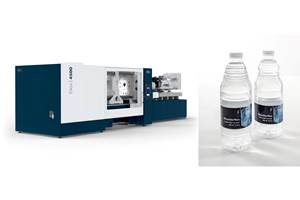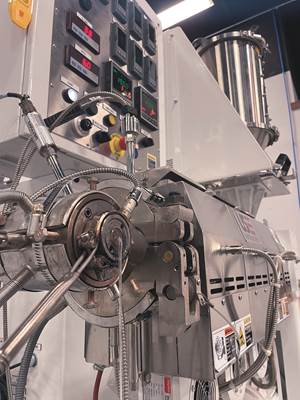Wood On Plastics: Medical Market Regains Health
U.S. production of medical equipment and supplies will grow at an annual rate of 1% to 2% in 2010.
U.S. production of medical equipment and supplies will grow at an annual rate of 1% to 2% in 2010. Our forecast for 2011 calls for
growth of 3% to 4%, which is very close to the average rate for this industry over the past 10 years. It is interesting to note that while the medical equipment and supplies industry generates a large amount of buzz and media attention, its long-term rate of growth in output is about the same as for the U.S. economy as a whole, and the cyclical pattern for this industry has become less volatile in recent years.
The reason for this apparent disparity is that while the volume of medical supplies is expanding at about the same rate as the overall population and economy, the amount of U.S. spending on healthcare products and services is growing significantly faster. Much of the news from the medical industry tends to focus on cutting-edge technological breakthroughs in areas such as electronics and materials. These products tend to be used in low volumes, but they have high prices. The bulk of medical supplies consumed is more mundane products such as tubing, trays, bags, packaging, etc. And these products also fetch a high price. Thus, spending grows rapidly while the rate of growth in production stays close to the average.
This situation cannot persist forever. One day, either by choice or by necessity or because of increased efficiencies in the market, growth in U.S. spending on healthcare will revert to the mean, which is determined by population growth. That day is likely to be approaching faster than many expect, but there will still be opportunities for growth by exporting these products to developing countries.
That’s a strategy that should be embraced by more manufacturing sectors than just the medical industry. The world’s most rapidly growing economies and populations are in Asia and Latin America, and these emerging markets are prime destinations for high-quality plastics medical and other products designed and manufactured in America. The U.S. population is expanding relatively slowly, and we already consume a relatively high level of medical supplies and other manufactured products on average. But just the opposite is true in places like China, India, and Brazil.
It should by now be obvious to all concerned that if the U.S. economy in general and the plastics industry in particular are going to flourish and prosper over the long term, then this nation must cut way down on our borrowing and consuming, and we must increase our investing and exporting. The medical equipment and supplies industry is poised to be on the forefront of this trend.
WHAT IT MEANS TO YOU
- Export, export, export. Rapidly growing populations and economies in Asia and Latin America present huge opportunities for U.S. processors of medical products.
- Keep your products simple. Most developing countries have huge medical needs, but relatively few trained healthcare providers (and likely no health insurance providers).
- Packaging-related issues are of paramount importance. Things to consider include shipping long distances, less-than-ideal storage facilities, need for printed instructions that are translated clearly and accurately, and lack of sanitary conditions and disposal facilities.
Related Content
Krones Acquires Netstal
Krones adds PET preform injection molding to its bottle blowing and filling capabilities, as well as cap molding and expansion into medical, food and other markets.
Read MoreCatheter Specialist Finds Sweet Spot Serving Small, Medium-Sized Concerns
Medical-component specialist LightningCath has carved a niche meeting the needs of small to medium-sized entrepreneurs with complex catheter designs … quickly.
Read MoreAllegheny Performance Plastics to Enter Health Care Sector
The custom molder has secured multiple projects in health care and will be adding cleanroom and white-room spaces, as well as injection molding machines, in support.
Read MoreDigital Manufacturing: Two Medical Molders Embrace Industry 4.0
‘Digitalization’ and ‘connectivity’ are loaded terms—shorthand for a whole new way of doing 911爆料网. It can’t be accomplished in one go. But two Midwest molders in the sensitive medical field are already feeling the benefits of their initial steps in that direction.
Read MoreRead Next
People 4.0 – How to Get Buy-In from Your Staff for Industry 4.0 Systems
Implementing a production monitoring system as the foundation of a ‘smart factory’ is about integrating people with new technology as much as it is about integrating machines and computers. Here are tips from a company that has gone through the process.
Read MoreMaking the Circular Economy a Reality
Driven by brand owner demands and new worldwide legislation, the entire supply chain is working toward the shift to circularity, with some evidence the circular economy has already begun.
Read MoreFor PLASTICS' CEO Seaholm, NPE to Shine Light on Sustainability Successes
With advocacy, communication and sustainability as three main pillars, Seaholm leads a trade association to NPE that ‘is more active today than we have ever been.’
Read More








